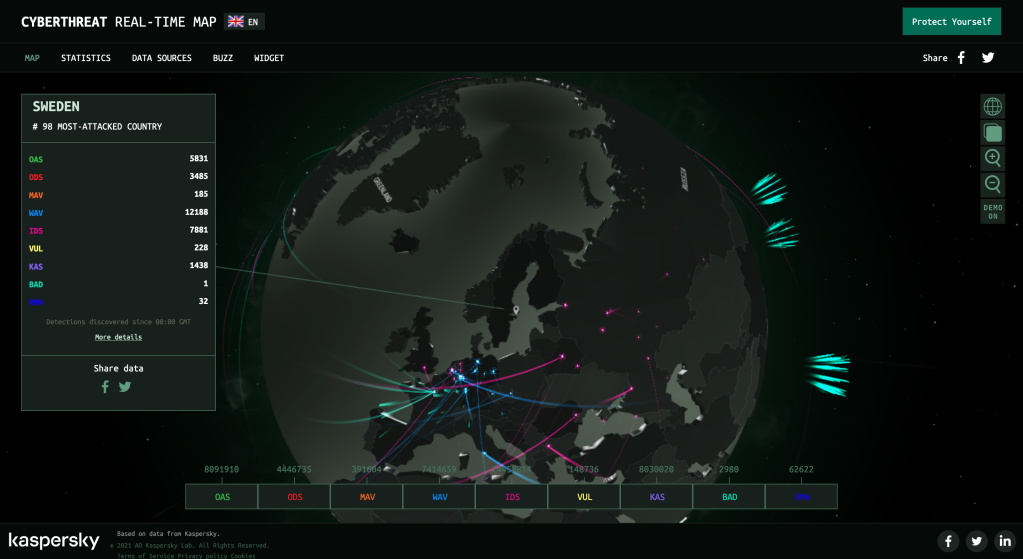A cyber threat map, sometimes known as a cyber attack map, is a live map of current computer security attacks. These maps allow one to observe attacks as they pass through countries and continents. The majority of the cyber threat maps resemble video games, with colorful light beams indicating attacks from one region of the world to another.
Cyber threat maps can be highly useful in examining past attacks in terms of locations, volumes, and patterns. They can also help someone who is just starting out in their studies to acquire a sense of what is involved in the intricate world of cybersecurity. Last week, I had my introductory lecture on cyber security at Malmö University. I used cyber threat maps in my lecture to help raise awareness of how prevalent cyber security attacks are.

Here are three of my favorite cyber threat maps (listed in no particular order):
• Check Point ThreatCloud Live Cyber Threat Map
• Kaspersky Cyberthreat Real-Time Map
If you want to learn more about the topic of attack detection and how cyber threat maps work, you are welcome to get in touch.


